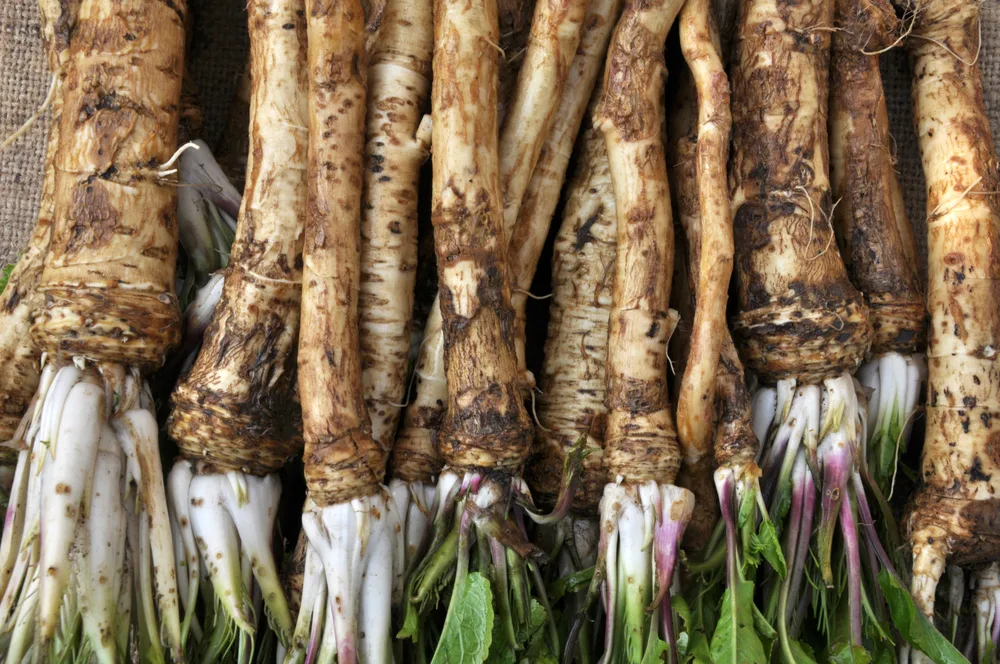
If you’re looking to diversify your garden with a strong, beneficial plant, then look no further. Horseradish is your new best friend – and possibly your garden’s.
Horseradish is not foreign to us. Many will recognize it preserved in jars in any local grocer, or as a side to Sunday brunch cocktails. But many don’t know of its many benefits for your health, your cooking, and your garden. Growing horseradish is an ideal way to add zest and spice to your garden – and your life.
And if that’s not a good enough reason, read on.
What is Horseradish?
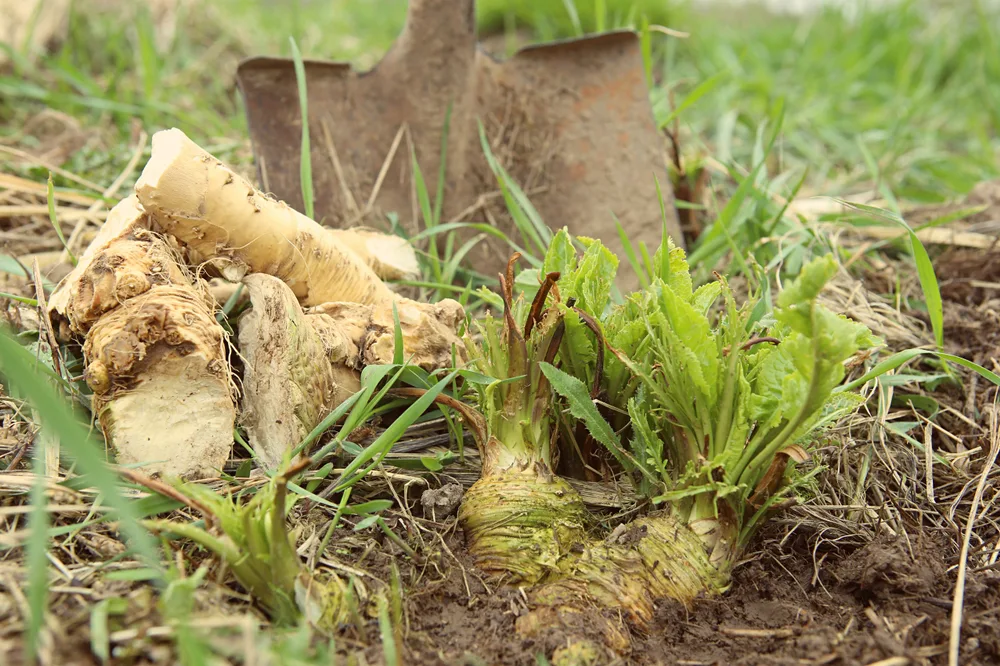
Before we get into why you should grow horseradish, we need to understand what it actually is. Vegetable? Herb or spice?
For starters, it’s part of the Brassicaceae family, related to mustards and cabbage. It is a perennial plant generally grown for its roots which pack the punch of flavor desired to add to meals and sauces. The root is technically a vegetable, but is often classified as a herb due to its culinary uses.
For more perennial veggies that will keep producing year after year, you’ll want to read – 18 Perennial Veggies You Can Plant Once and Harvest For Years
Its leaves are highly useful too, especially if you’re looking for less pungent flavors.
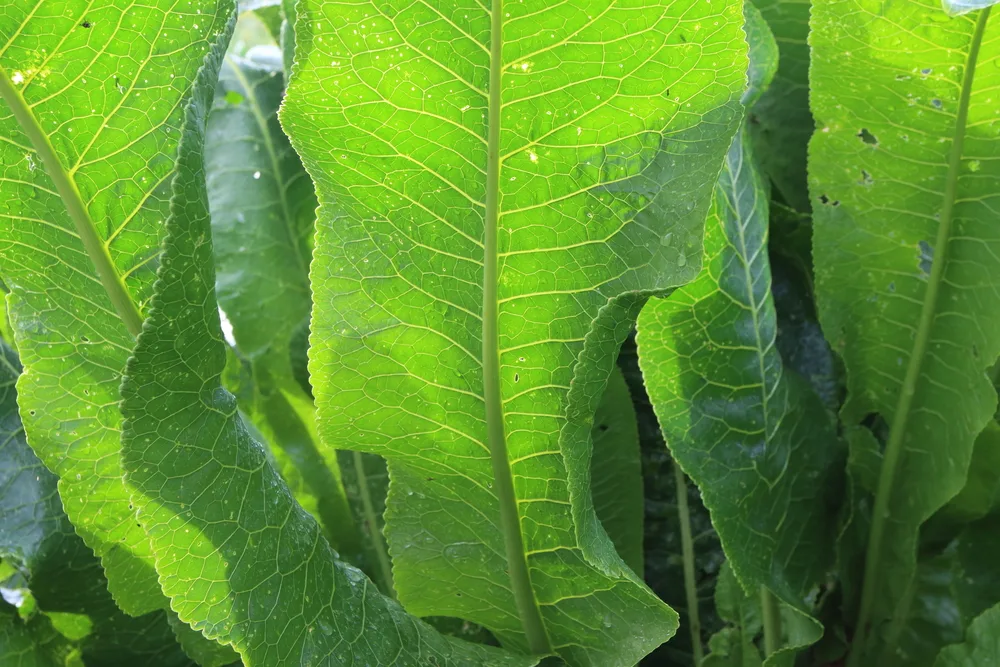
There are two horseradish varieties to choose from, common and bohemian. You can easily spot the difference in the appearance of their leaves. Bohemian horseradish leaves are thinner and smooth, while common horseradish has large, crinkled leaves.
Bohemian is said to be superior when it comes to disease resistance, and common when it comes to taste, but both types are very similar.
Why You Should Grow Horseradish in Your Garden
1. Easy To Grow
First and foremost, horseradish is extremely easy to grow. It does well in full sun and will thrive in most climates (USDA planting zones 3 – 9), but does best in regions with temperatures ranging between 45F and 75F. It can survive through tough winters, even in some of the coldest areas.
Horseradish doesn’t require too much care and is unlikely to give you any major headaches. You are far more likely to encounter problems with it growing too well, rather than not at all. If this little vegetable wasn’t so useful, you’d think it was a weed with how quickly it spreads.
Despite its ‘invasive’ reputation, it is not difficult to contain. The best way to restrain horseradish is to plant it in containers or raised beds. Once planted, it can take as little as 4 months to harvest, but it is best left to establish for a season or two before harvesting. Its leaves grow quickly too and can be just as useful as the roots in cooking.
2. One Root for a Lifetime Supply
One of the best reasons to grow your horseradish is that you only need one root for a lifetime supply. Roots from either a nursery or even a trusted grocer will do the trick.
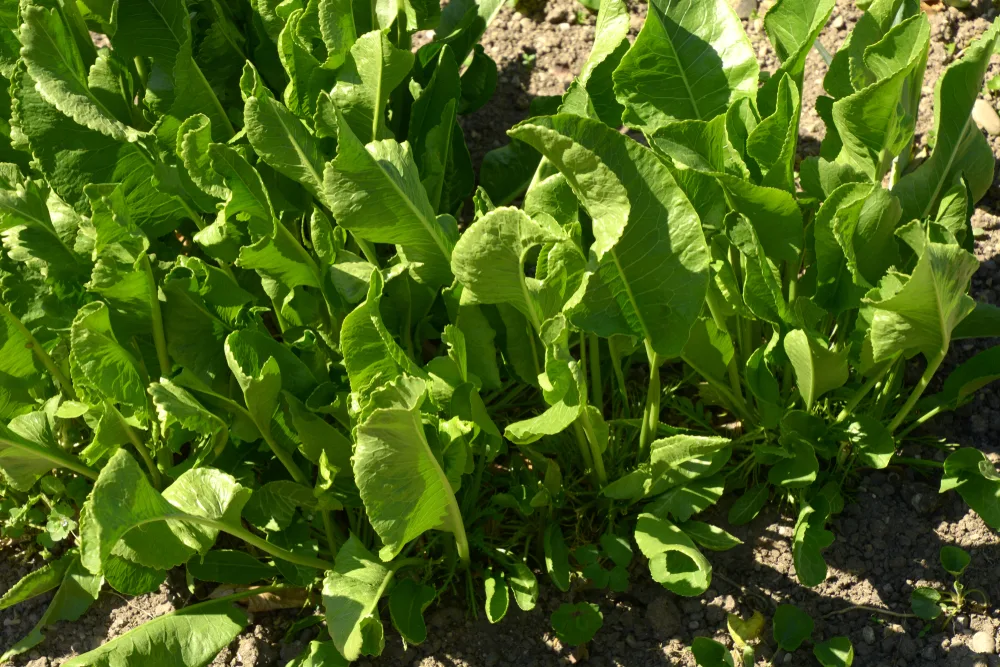
Because it grows so quickly and produces so much, you really won’t need to worry about running out of roots or leaves. It will continue to spread season after season with no input from you, leaving you with more horseradish than you’ll know what to do with.
3. Superior to Storebought
Like any homegrown vegetable or herb, garden horseradishes have far better flavor than those bought from the store. The fullness of its spicey flavors is released the minute you cut into or grind the fresh roots or leaves.
The punch of flavor is due to the chemical compound allyl isothiocyanate being disturbed. It interacts with the plant’s enzymes when cut, ground, or grated.
It’s also more affordable than store-bought, more nutritious, and much better for the environment.
4. Diseases and Pests
Not only is horseradish relatively easy to care for, but there are very few diseases and pests you need to worry about. Very few gardeners report problems with their horseradish, and the problems that do appear are typically easy to eradicate.
Aphids, a headache-inducing pest that many home gardeners are familiar with, tend to feed on the leaves of horseradish. They aren’t too difficult to get rid of though. Depending on the size of the infestation, you can easily pick them off and squish them. Arming yourself with a trustee water spray bottle filled with natural soap, you can also zap them off your leaves.
As a root vegetable, horseradish is susceptible to rotting and soil-borne fungal diseases. However, this is usually only an issue when watered incorrectly, as consistently moist soil is often the cause. Ensure the soil around your horseradish is never waterlogged and you shouldn’t encounter any problems.
5. Good For Your Garden
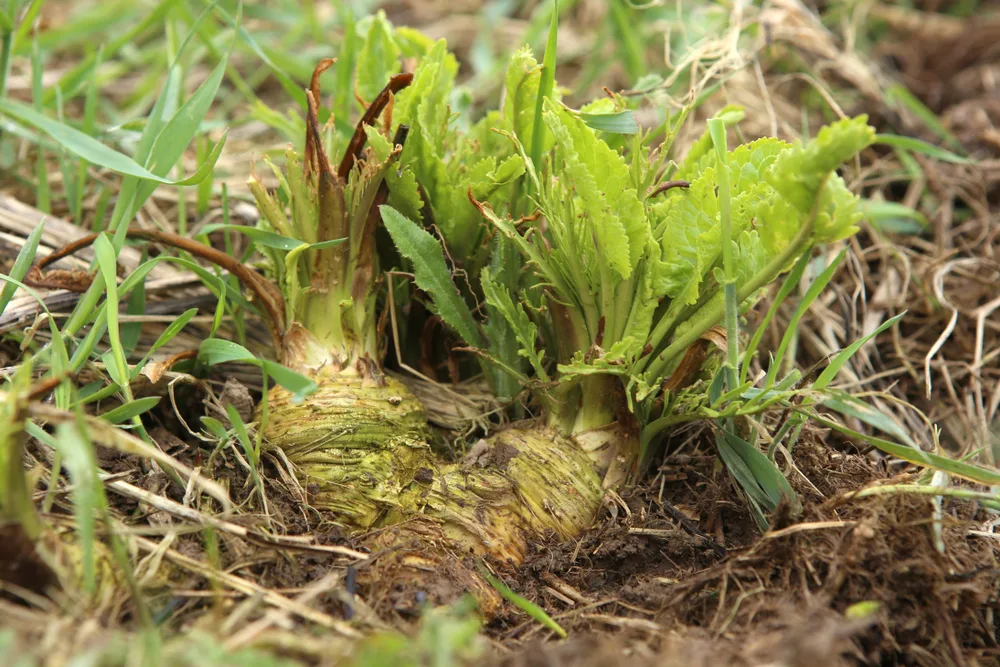
Horseradish makes a good companion plant (when its spread is controlled) as its pungent aroma repels many pests. The natural oils of the roots also reduce instances of soil-borne fungal diseases. It’s commonly paired with potatoes and various fruit trees, including apple, pear, and cherry trees.
For even more anti-fungal benefits, you can also mince the horseradish root and mix it with water to form an anti-fungal spray. Use this spray to fight several diseases, such as brown rot.
While good for some of your garden, beware – the pungent roots may cause issues with certain vegetables. Horseradish affects the taste of vegetables that are planted near them – particularly leafy vegetables and beans. Consistently peppery greens may be desirable to some, but not all, so watch where you plant.
6. Good For You
Horseradish also has several health benefits. The vegetable is jam-packed with vitamins and nutrients, including calcium and vitamin C. The chemical compound allyl isothiocyanate holds antibacterial and antifungal properties for plants and humans. This helps fight bacterial diseases and some believe it may help treat urinary tract infections.
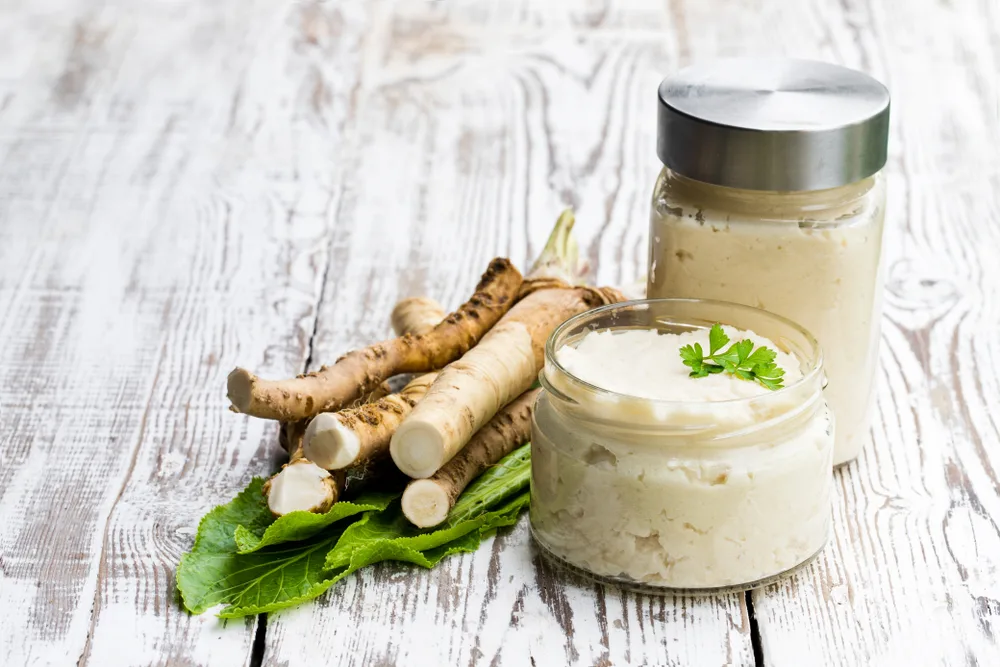
These properties, along with the pungent smell of the roots, are known to relieve symptoms of colds and flu. It may even help reduce mucus buildup and improve overall circulation.
Many studies suggest it has cancer-fighting properties too. Its chemical compounds are said to inhibit the growth of cancer cells and boost your overall immunity.
7. Preserve, Preserve, Preserve
You may find yourself with more horseradish than you know what to do with, but that shouldn’t be a concern. Horseradish preserves incredibly well (as evidenced by the rows of jars at the store). You can even freeze it.
We will go into the specifics of harvesting and storing your horseradish soon, but know that you can keep preserved horseradish for close to 4 months in your refrigerator. Better yet, frozen horseradish can be kept for 6 months. Unfortunately, it may lose some of its strong flavors, but it will be no less pungent than the store-bought variety.
8. Great Addition to Your Homemade Meals
Preserved or fresh, you can’t go wrong adding horseradish to homemade condiments and dishes. With its extra health benefits and great taste, there’s nothing stopping you from adding it to any meal you like.
Its versatility creates many options for meals, and as an uncommon flavor, it is bound to surprise the tastebuds of your dinner guests. Add zest to plain wraps and sandwiches, mix it into creams, dips and sauces, or serve along with a cold Bloody Mary.
Alternatively, gather a few roots and make your own homemade mock wasabi. As true wasabi is difficult to grow and hard to come by, most wasabi we encounter alongside our sushi is actually made from horseradish. Blend up some fresh horseradish with a bit of mustard, tint with green food coloring, and no one will be able to tell the difference.
How to Grow Horseradish
Planting
Now that you’re convinced to plant this vegetable in your garden, let’s get down to the nitty-gritty.
Planting horseradish is simple and worry-free. It grows well either from full planted roots or angled root cuttings. Begin planting your roots or cuttings in late fall or early spring. Space them about 2 feet apart – they will spread beyond soon enough. Plant either upright or at a 45-degree angle with a couple of inches of soil covering the root.
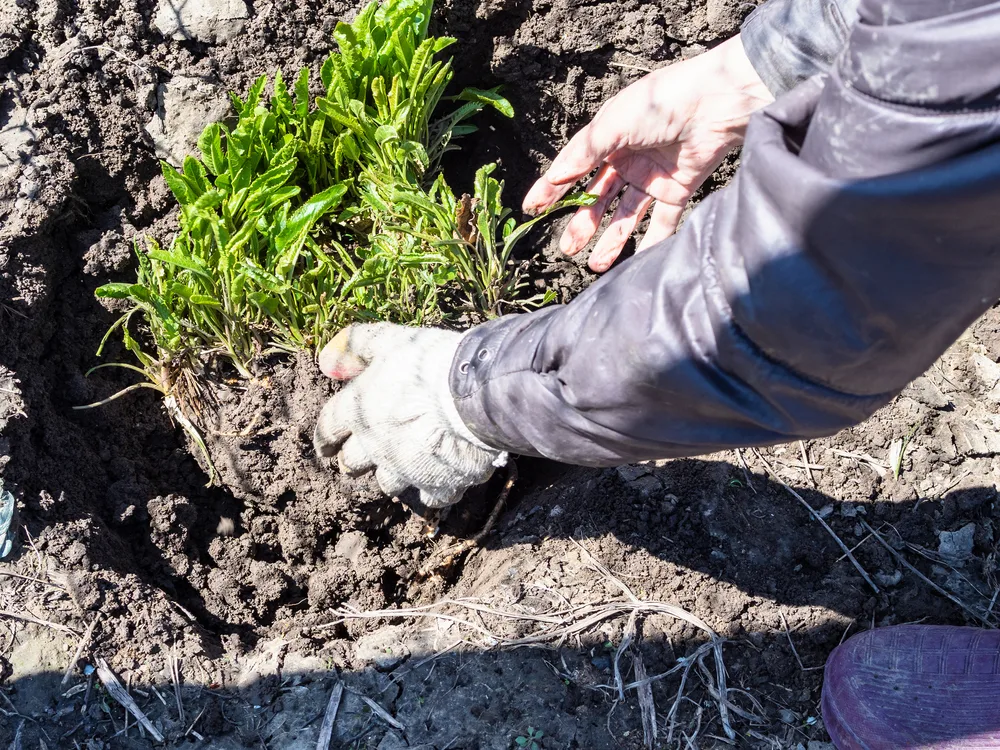
While preferring full sun, horseradish can tolerate some shade. Plant far from other important veggies in a remote spot so that if it does spread, you can easily manage it.
Alternatively, simply plant it in a container. Follow the above advice, but ensure the pot is deep enough to facilitate its long roots. Ensure there are plenty of drainage holes too. If there is anything horseradish won’t tolerate, it’s wet soil.
Care
Caring for your horseradish is incredibly simple. It needs two things: healthy soil, and moderate amounts of water.
Whether in pots or the ground, the soil should be well-draining and enriched with organic materials. As prolific spreaders and growers, horseradish does not need fertilizer or regular soil amendment.
The most important care practice is watering. If left to dry out for too long, the roots will become woody. However, if they are overwatered, the roots will begin to rot. It’s always best to stay on the side of underwatering. Once established, in most regions, it will survive on rainwater alone. In dryer seasons, it may need an extra watering or two, but it is not a thirsty plant.
Harvesting
You can harvest your roots and leaves once the horseradish has established itself in your garden. When you’re ready, loosen the soil around the root, and make sure to pick up any pieces that break off. You can always replant these and continue growing horseradish.
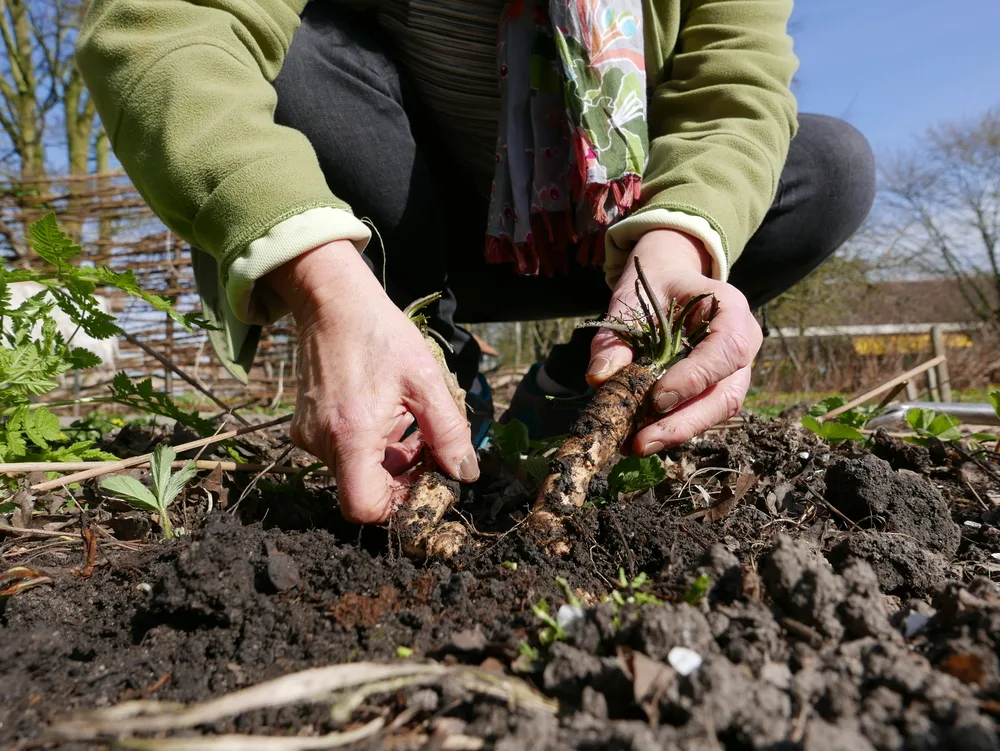
Keep the harvested root in bags in the fridge or freezer, or prepare and preserve it for later use.
Storing, Preparing, And Preserving Your Horseradish
Scrub and dry your horseradish roots before bagging and placing them in the fridge. Only grate and use the horseradish when you need it to keep it as fresh as possible.
To make horseradish sauce, peel and cut the roots into chunks and blend them up. Toss the sauce into a jar and store it in the fridge! As easy as growing it.
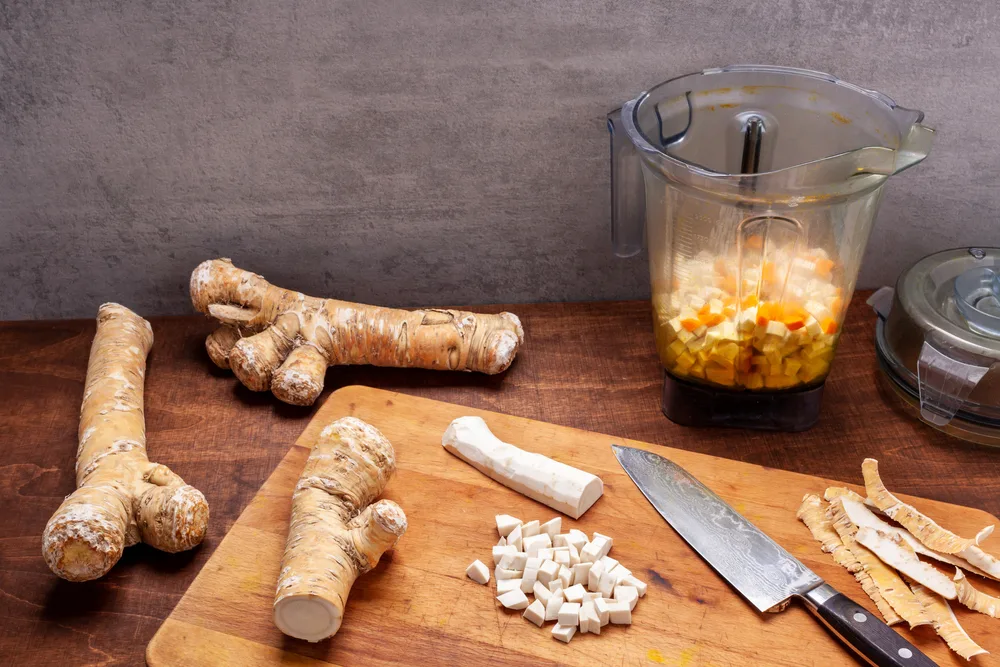
You can even preserve grated horseradish in lemon juice or vinegar, but know that the vinegar does interfere with the flavor.
Bear in mind, preparation disturbs the chemical compounds within the roots, so the strong fumes may make you tear up (more so than onions).
Cooking With Horseradish
Now that you’ve got your roots, condiment, or preserve, you can start adding horseradish to your meals.
Horseradish makes a great addition to dips. Just blend it up with other dip staples like chives and you’ll be good to go. Add it to some melted butter to add some spiciness to your fried steaks or chicken too.
This handy little zester is the perfect tool for grating horseradish as you need it.
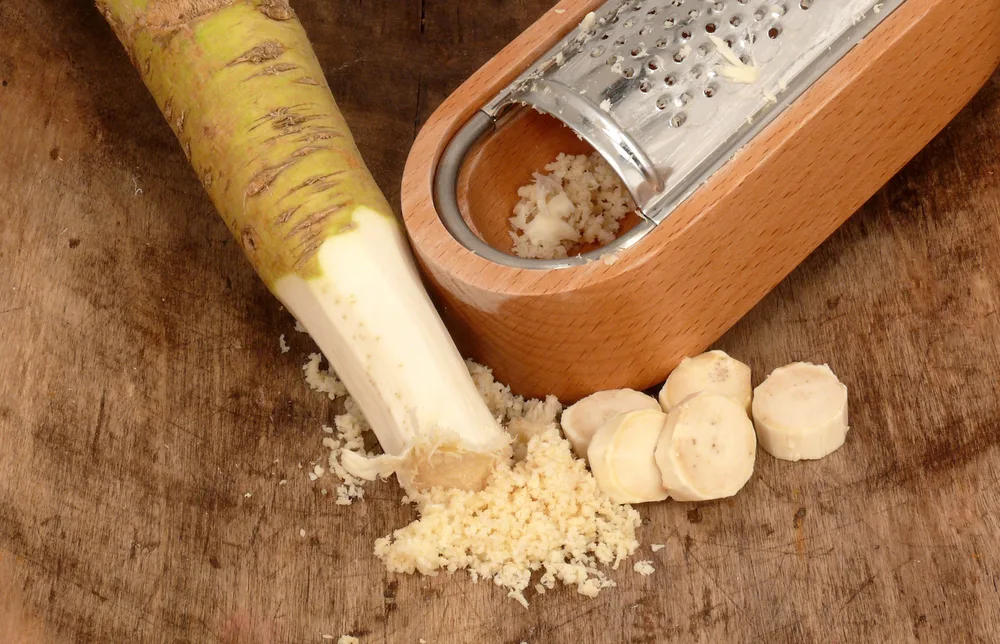
It makes a great companion to mayonnaise, bringing some life to ordinary sandwiches and wraps. Salads benefit from some horseradish love too. Grate some horseradish, and make sure you have some lemon juice, canola oil, and lemon juice handy. Mix with a little dijon mustard, some parsley, and minced shallots, and you have a wonderful salad dressing. Toss some horseradish leaves in there too for an extra bite.
This versatile vegetable will no doubt bring out the creative chef in you.
Horseradish As Medicine
Horseradish roots, leaves, and even sauce make a great alternative to store-bought medications.
Some horseradish sauce will quickly clear out your sinuses in a pinch. But, the best way to use this herb as medicine is by making horseradish tea. Grate some horseradish root and add to boiling water, along with some lemon juice and honey. Drain the tea once it steeps and you’ve got yourself a cold-fighting tea at your fingertips.
Horseradish is extremely versatile, as you have surely noticed. Get your creative cooking juices sizzling by introducing horseradish to your meals and fight any cold with some yummy horseradish tea. It is so easy to grow and help you and garden at the same time.
For another great, edible root, check out Garlic Mustard – The Tastiest Invasive Species You Can Eat.

Get the famous Rural Sprout newsletter delivered to your inbox.
Including Sunday musings from our editor, Tracey, as well as “What’s Up Wednesday” our roundup of what’s in season and new article updates and alerts.

